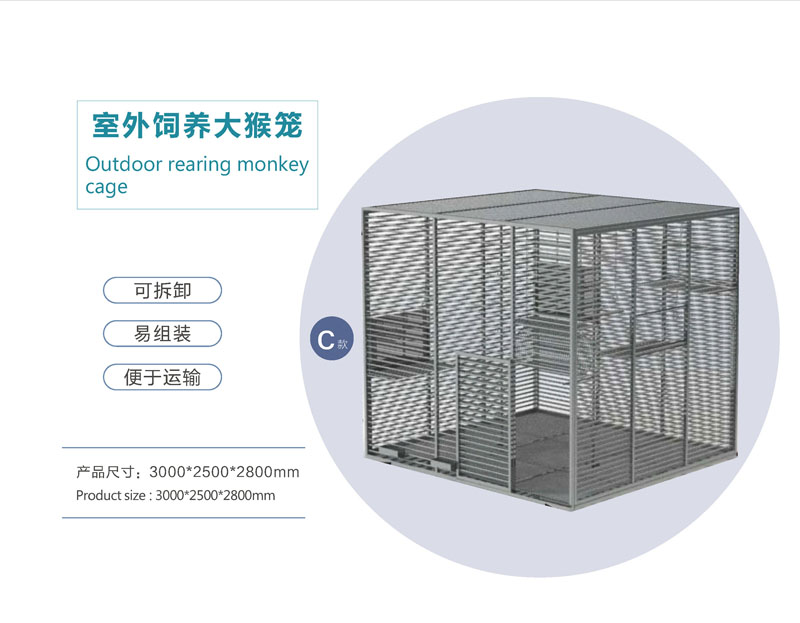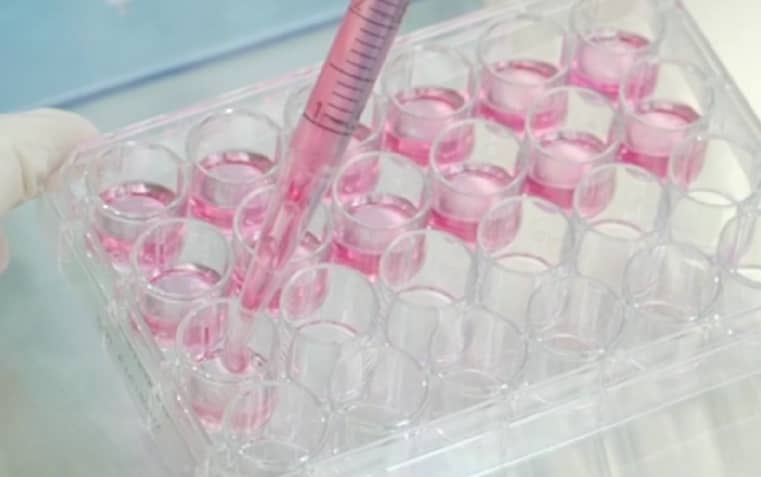
The company focuses on the research and development as well as production of experimental monkey model animals, and is committed to providing global research institutions and pharmaceutical enterprises with experimental monkey models that highly simulate human diseases. Our products are widely used in fields such as diabetes and cardiovascular and cerebrovascular diseases, facilitating drug development, efficacy testing and disease mechanism research.
Core product
1. Diabetic model experimental monkeys
Model types: Type 2 Diabetes Mellitus (T2DM), Type 1 Diabetes mellitus (T1DM)
Modeling methods: spontaneous model screening, induction by high-fat and high-sugar diet, and chemical induction
Application fields: Research and development of hypoglycemic drugs, research on complications of diabetes
Characteristics: Highly simulates the pathological features of human diabetes, such as insulin resistance and hyperglycemia
2. Experimental monkeys with cardiovascular and cerebrovascular disease models
Model types: Atherosclerosis, hypertension, myocardial infarction, stroke
Modeling methods: Induction by high-fat diet, surgical ligation, and drug induction
Application fields: Screening of cardiovascular and cerebrovascular drugs, research on disease mechanisms
Feature: Precisely simulates the pathophysiological processes of human cardiovascular and cerebrovascular diseases
3、 Advantages
Highly simulated human diseases: Experimental monkeys are highly similar to humans in terms of genetics, physiology and metabolism.
Advanced modeling technology: Ensuring the stability and repeatability of model animals.
Strict animal welfare guarantee: In compliance with international laboratory animal management norms under the CNAS system management framework.
Personalized customization service: Based on customer requirements, provide the design and development of specific disease models.
Comprehensive technical support: Full-process support from model establishment to data analysis.
Rhesus monkeys, macaques, yellow monkeysScientific name: Macaca mulatta The rhesus monkey (scientific name: Macaca mulatta), commonly known as the macaque, yellow monkey, etc., belongs to the genus Macaque of the Monkey family. It has a medium body size, with a body length of 430 to 600 millimeters. The weight of males is 7 to 10 kilograms and that of females is 5 to 6 kilograms. The body hair is generally yellowish-brown, the head crest is orange, the snout is relatively short, and there are cheek pouches on both cheeks. The upper back is obviously grey, the waist is orange-yellow or rust-brown, the hips are well-calloused and flesh-red, and the tail is relatively long. The population of macaques is distributed in the northeastern part of China, extending to the Yangtze River Basin. The southernmost distribution can be seen in the South Bay of Hainan (18°23' N latitude, 100°00' e longitude). The northern part can be found in the southern end of the Taihang Mountains at the border of Henan and Shanxi provinces. The western part can be found in the southern part of Tibet. The eastern part ends in the southern part of Zhejiang Province. |
| |
As a primate, the macaque shares many extremely similar biological characteristics with humans and is an ideal advanced experimental animal for biomedical research. I. Research on Infectious DiseasesMacaques are excellent animal models for studying human infectious diseases. They can be infected with infectious diseases specific to humans, especially those that cannot be replicated by other animals. Ii. Pharmacological and toxicological research Studies have confirmed that the metabolism of most drugs in monkeys is similar to that in humans. Therefore, macaque experiments serve as a good animal model for drug metabolism, efficacy, and toxicological reactions. Iii. Oncology Research The sensitivity of proto-primates to neoplastic disorders, especially to chemical carcinogens, is higher than that of anthropoid species. Iv. Research on cardiovascular Diseases and endocrine diseases Macaques possess physiological, psychological and behavioral characteristics very similar to those of humans, making them suitable for research on autoimmune diseases, neurodegenerative diseases, genetic diseases, drug studies and genetic engineering. 五、器官移植 The leukocyte antigen (RhLA) of the experimental animal macaque is one of the important objects for studying the major histocompatibility complex gene regions in primates. Similar to human HLA antigens, RhLA has a high degree of polymorphism. |
|
Long-tailed macaque, crab-eating macaqueScientific name:Macaca Fascicularis The crab-eating macaque, also known as the long-tailed macaque or crab-eating macaque, is an animal belonging to the genus Macaque of the family Moniidae in the order Primates. It is mainly distributed in countries and regions such as Hong Kong, China, Indonesia, Laos, Vietnam, Malaysia, and the Philippines in southeastern Asia. The coat color varies from yellow, gray to brown, ranging from grayish brown to reddish-brown. The abdominal hair and the inner side of the limbs are light white, and the crest hair is recessed. The face is brownish gray with whiskers, the skin around the eyes is bare, and there is a white triangular area on the upper side of the eyelid. The ears are upright and the eyes are black. The nose is flat and the nostrils are very narrow. There are well-developed cheek pouches on both sides of the face. There is a small twine on the hair on the top of the head. The adult body length is approximately 37 to 63 centimeters, the tail length is about 36 to 71 centimeters, and the weight is between 3.4 and 12 kilograms. The food sources of the crab-eating monkey are quite extensive. Besides crabs, fruits, leaves, small animals and birds are all its objects of consumption. In medical research, the crab-eating monkey is a widely used experimental animal. For example, toxicity studies of subcutaneous injection of recombinant human parathyroid hormone rh-pth(1-34) in cynomolgus monkeys, etc. | ||
The crab-eating monkey is highly similar to humans in terms of tissue structure, immunity, physiology and metabolism. It is an ideal experimental animal for the study of the mechanisms of human diseases such as the nervous system, reproductive system, stem cells, infectious diseases and diabetes, as well as animal models. It is also an important model animal for new drug development and drug safety evaluation. The main habitat of the crab-eating macaque is Southeast Asia, and there are mainly two groups: 1) Insular, which is from the Philippines and Indonesia; 2) Indochinese/ "Asian", produced in Vietnam, Cambodia, Laos, Thailand and Malaysia. | Protection levelListed in Appendix II of the Convention on International Trade in Endangered Species of Wild Fauna and Flora. Listed in the IUCN Red List of Threatened Species 2008 ver 3.1 - Low Concern (LC). The crab-eating macaque is a second-class key protected animal in China and is listed in Appendix II of the Convention on International Trade in Endangered Species of Wild Fauna and Flora. |
Winter melon pig, banana pig, two-headed black pigBama Fragrant Pig, a specialty of Bama Yao Autonomous County, Hechi City, Guangxi Zhuang Autonomous Region, is a product with a geographical indication of China. The Bama fragrant Pig originated from the local native pig. It is said to have been domesticated from wild boars. The people of Bama call it "Winter Melon Pig", "Banana Pig" or "Two-Headed Black Pig". Because of its fine bones, crispy skin, tender meat, bright red muscles, delicious and sweet taste, and rich nutrition, it is even better than mountain delicacies and wild games. Therefore, people from other places find it very fresh and fragrant when they eat it, and it has been passed down as "fragrant pig". The Bama fragrant pig is fragrant even when cooked without any seasonings. It is renowned for the saying, "When one family cooks meat, the aroma spreads far and wide; one can smell it from seven miles away." It is hailed as the "noble family" among pigs. |
| |
Scientific research applicationIn the field of biomedical research, the experimental Bama miniature pig, with its unique physiological characteristics and genetic similarities, has become an indispensable experimental subject for scientific researchers. In the research of cardiovascular diseases, the experimental Bama miniature pigs have become ideal subjects for simulating human heart diseases because their heart structure is similar to that of humans. Researchers can gain a more accurate understanding of the pathogenesis of heart disease and the efficacy of drug treatment through the study of experimental Bama miniature pigs. In the research of metabolic diseases such as diabetes and obesity, experimental Bama miniature pigs also play an important role. Because the food intake and energy metabolism processes of these miniature pigs are very similar to those of humans, researchers can use them to explore the development process of metabolic diseases and their potential treatment approaches. In the simulation training of organ transplantation and surgical operations, the experimental Bama miniature pigs also play an important role. | Regarding xenotransplantationAccording to the World Health Organization (WHO), currently about 2 million people worldwide need organ transplants each year, but the global average organ supply-demand ratio is less than 1:20. Take China as an example. Every year, approximately 300,000 patients with terminal organ failure need transplants, but there are not many "lucky ones" who have the opportunity to receive organ transplants based on this number. Because the size, physiological structure and function of pig organs are similar to those of human organs of the same kind, in cases where human donated organs cannot be obtained, pig organs are regarded as the closest substitutes. In xenotransplantation, the immune rejection reaction is the most significant challenge. Due to the significant genetic differences between the donor and the recipient, the recipient's immune system will regard the xenogeneic organ as a "non-self" component and attack it, thereby triggering a strong rejection reaction. Through gene editing, researchers can modify donor organs, thereby reducing or eliminating the immune rejection response of the human body to them. Among them, the relatively mainstream gene editing technology is CRISPR-Cas9. In April 2022, the China Organ Transplant Development Foundation released the "Expert Consensus on Clinical Trials of Human Xenotransplantation in China", clearly stating that for xenotransplantation, the attitude of "encouraging research and prudent development" should be adopted, with a focus on strengthening basic research and prudently advancing clinical research. |




Experimental monkeys (such as rhesus monkeys and crab-eating monkeys, etc.) play a significant role in biomedical research, especially in drug development, vaccine testing and disease model studies. Biological products of experimental monkeys are substances extracted from their blood, tissues or cells, and are widely used in scientific research, drug development and clinical treatment. Hengshu Biology's biological products have a wide range of sources, covering the entire cycle of experimental monkey populations. With rich technical experience, it can meet the customized needs of different customers.
Main types of biological products
1. Serum
Source: Blood of experimental monkeys.
Usage: It is used for cell culture, immunological research, antibody production, etc.
Features: High quality, low endotoxin, suitable for high-sensitivity experiments.
2. Plasma
Source: Blood of experimental monkeys (after removing blood cells).
Usage: It is used for coagulation research, biomarker detection, etc.
Characteristics: Rich in various bioactive molecules.
3. Antibody
Source: Specific antibodies produced by the immune system of experimental monkeys.
Usage: It is used for immunological experiments, disease diagnosis and treatment.
Characteristics: High specificity and high affinity.
4. Cell
Source: Tissues or blood of experimental monkeys (such as lymphocytes, stem cells, etc.).
Usage: It is used for cell culture, gene editing, and disease model research.
Feature: Provide high-quality experimental materials.
5. Tissue samples
Source: Organs or tissues of experimental monkeys (such as liver, kidney, brain tissue, etc.).
Usage: It is used for pathological research, drug toxicity testing, etc.
Feature: Provides real biological environment data.
6. DNA/RNA
Source: Cells or tissues of experimental monkeys.
Usage: It is used for genomics and transcriptomics research.
Feature: High-quality genetic material.
Application field
1.Biological products of experimental monkeys for drug development are used for drug screening, efficacy evaluation and toxicity testing.
2. Vaccine research: Experimental monkeys are important models for vaccine development, and their biological products are used for immune response research.
3. Biological products of experimental monkeys for disease models are used to construct disease models, such as AIDS and Parkinson's disease.
4. Basic research is used for fundamental research in fields such as immunology, genetics, and neuroscience.
Quality control
We strictly adhere to quality control standards (ISO, CNAS) to ensure the quality and safety of all biological products. Each batch of products has undergone strict testing






